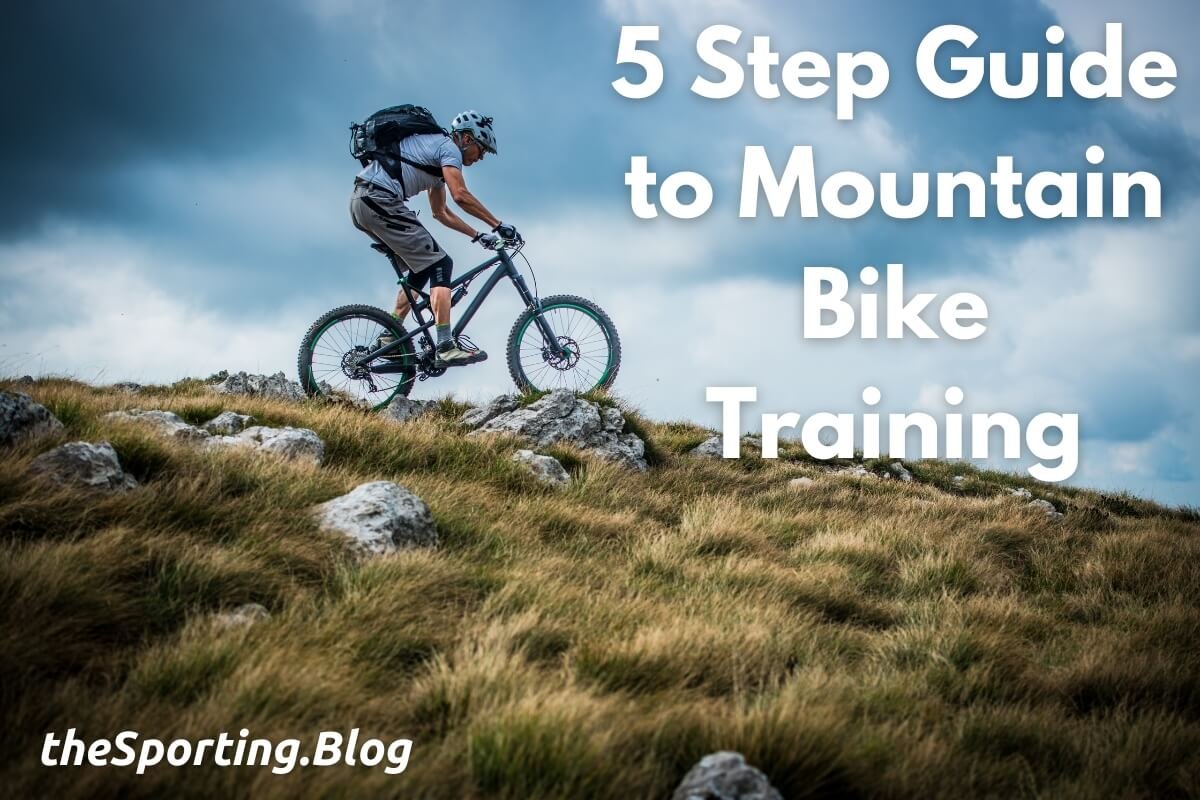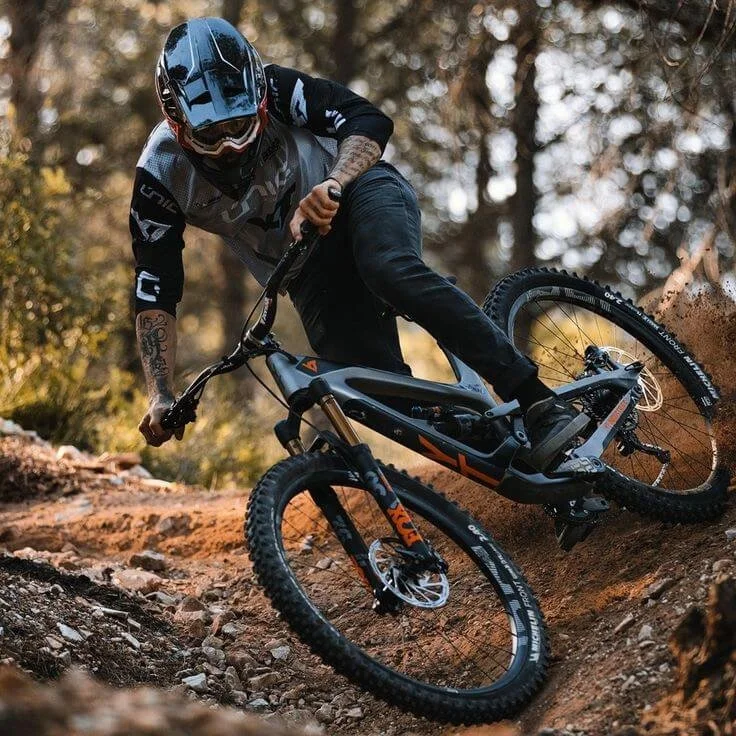How to Train For Mountain Biking: The 5 Step Guide
A 5-Step Guide to Mountain Bike Training
Mountain biking is very physically demanding. In fact, it is one of the most muscle-intensive sports around, requiring the use of both upper and lower body muscle areas.
This means that if you want to get serious and ride at the highest level, preparation and training is absolutely essential.
That’s why we’ve put together a simple and easy-to-follow 5-step guide for mountain bike training. This guide is designed for the busy working individual who needs to fit training into a normal 7-day week plan.
There are 5 ways to train for mountain biking:
Improve your strength
Improve your handling
Run in the off-season
Practice looking ahead
1. Improve your strength
We’ve said it before; mountain biking is tough. But once you have the strength to handle your bike at will, the feeling is immense. The more your strength increases, the more your ambition and determination will grow on the bike.
You’re ultimately strengthening your mind as well as your body.
Whilst mountain biking will work the whole body, there are select muscles that you may want to train the most, including:
Quadriceps - located on the front of the thighs.
Glutes - essentially the muscles that make up the buttocks.
Hamstrings - on the back of the thighs.
Calves - on the back of your lower legs.
Core - which tends to include lower & upper abdominals, obliques and lower back.
Arms - mostly around the biceps and triceps.
To work these muscles, we recommend either targeting the specific muscle in weight training in the gym or alternatively if you prefer to exercise outdoors, interval training can build muscle and work your cardiovascular system and nervous system, helping you burn fat.
Global Mountain Bike Networking have put together a really handy video on interval training, to help you get you started.
2. Eat right
A mountain biker’s diet balances the priorities of muscle growth, muscle repair and energy. With this in mind, timing is essential- and eating consistently throughout the day is important.
If you’re a busy person with friends, work and family responsibilities- we’ve put together some foods that are easier to integrate into a normal day.
Whole Grain Breads
A hearty, nutrient-dense carbohydrate. Whole-grain bread tastes great and is incredibly versatile. Like other carbohydrates, whole grain bread offers slow-release energy throughout the day to compliment your calorie-rich snacks.
It’s not so much the bread itself, but the whole grains which offer the best nutrients. These nutrients include:
Protein - great for muscle recovery, particularly after an intense ride.
Fibre - essential for smooth bowel movement, making sure you feel light and comfortable.
B vitamins - are great for energy levels and brain function, helping you think sharply.
Carbs really are king, and your body can consume around 60g per hour. Pack a sandwich for a mid-ride break to aid recovery and support muscle growth.
Lean Meats
Or alternatively eggs, for vegetarians. Lean meats include beef, lamb, veal, chicken and most seafoods. They offer the best post-ride recovery nutrients.
Chicken and fish in particular offer a low-fat/high protein mix which aids muscle recovery and encourages easy digestion.
The western diet has moved towards stocking up on lean meats in the evening. However, a regular serving of lean meat throughout the day is highly recommended- particularly if you train daily either on the bike or in the gym.
For the best combination of fats and oils (while also keeping the environment in mind), eggs for breakfast, fish or nuts and seeds during lunch and chicken in the evening is a great combination.
Porridge
With any luck, you have slept a solid 8 hours prior to competition day with plenty of deep REM sleep. Even if you haven’t slept, don’t worry. A porridge breakfast will put things straight! Or even better - porridge with banana provides the ultimate slow release energy throughout the day.
If it’s a competition day, make sure you’re eating no less than 2 hours before you start riding.
Finally, to aid digestion, make sure you drink at least a pint of water with breakfast. This combination will keep you feeling light and agile whilst providing slow-release energy throughout the day.
Jelly Sweets
On a 2 to 3 hour cross-country ride, even the biggest bowl of porridge won’t keep you fully-energised during your ride.
Jelly sweets (including gelatin-free vegetarian alternatives in most supermarkets) offer a lightweight yet dense source of quick release energy which is high in calories.
Pack these sweets without a bag in a handlebar bag or small back pocket in your shorts. A decent handful will do the trick and can be accessed without having to stop for long or lose time.
Raisins
Raisins prove particularly effective if your stomach doesn’t agree with energy gels or similar products. Similarly to jelly sweets, raisins are easy to access and are calorie dense. However, what makes them unique is that they are stacked with carbohydrates.
Wrap up individual portions of raisins, nuts and seeds in foil and eat one portion every 20 to 30 minutes.
This way, you’ll never feel hungry and you will assist that slow-release energy from your hearty breakfast earlier in the day.
3. Improve Your Handling
When it comes to handling, practice literally makes perfect. The better you can manage tight turns, sharp drops and jumps the more likely you are to set a record time and, more importantly, avoid injury.
When it comes to practice, drills are where it’s at and Redbull themselves recommend 5 different drills to improve your handling:
Cornering - find a solid set of bends and focus on your body position, retaining speed and staying off the breaks.
Technical downhills - start by walking it, then riding it slowly and gradually building up until you find the best line to hit that downhill at the perfect speed.
Jumping - Start with smaller jumps and work your way up, inspecting the jump on foot beforehand every single time.
Pumping - pumping through terrain helps maximise control and speed.
Technical climbing - practice with the same mindset as your downhills, gradually building up until you find the best line to climb at maximum speed.
Follow these 5 drills and form great habits within them, and watch your speed and confidence increase ride by ride.
4. Run in the off-season
It’s important to have an off-season for physical recovery, and also to reignite that love for the sport of mountain biking. That said, keeping active and fit during this off-season is essential to avoid that shock when you hit the pedals once again.
Running is one of the best ways of training during the off-season, because in many ways it replicates a lot of the impact, joint work and muscle work which is required on the mountain bike.
When planning your off-season runs, be sure to include:
Rest stops along the way
Uphills and downhills - this will keep working your cardiovascular strength
Great nutrition before and after - refer back to step 2
You’ll be surprised how much you enjoy the slower pace, and before it starts to get boring you’ll be hitting the pedals and tracks once again.
5. Practice Looking Ahead
This is easier said than done - it’s almost like watching out for other traffic as another car is heading straight for you. The temptation to keep looking at your front wheel and the obstacles in front of you will be constant.
However, looking ahead allows you to prepare ahead of time how you are going to approach downhills, uphills, drops and jumps. You’ll find yourself becoming more proactive and your times will become better and better.
Again, the key here is practice! Practice initially on the same track, starting slowly and keeping your chin up as much as possible. Sometimes a verbal reminder of “chin up” helps.
As your confidence builds and you find yourself looking ahead confidently, slowly build up your speed.
Balance is Key!
When it comes to attempting new tracks, be even more proactive and study the track beforehand either via a map or walking. This is exactly what F1 drivers do, they walk the track before driving it, and it’s no different for you.
Look everywhere and make mental notes of drops, bends and jumps. Before you know it, your confidence will be through the roof.
Follow these 5 steps throughout the season and enjoy faster times, more ambitious rides and less falls!
This post is written by Mike Straw on behalf of trade bike parts provider Mackadams Factors for The Sporting Blog.



